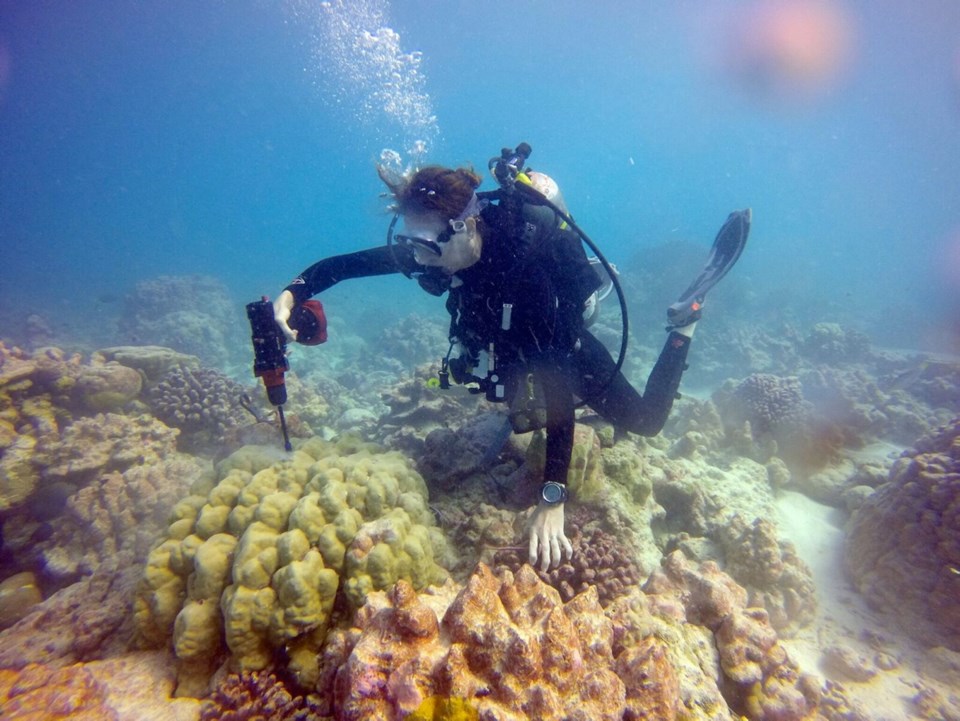In a ghost town of dead coral off a remote Pacific island, scientists have found a bit more life.
In excursions a year ago and then last April, scientists examined the normally stunning coral reefs around the island of Kiritimati — about 2,000 kilometres south of the Hawaiian Islands —and pronounced it mostly a boneyard of dead coral. About 85 per cent of the coral was dead, 10 per cent was sick and bleached but still technically alive, and only five per cent was doing OK.
The same scientists returned this month and found that six to seven per cent of the coral is alive and not bleached, said University of Victoria coral-reef scientist Julia Baum, speaking by Skype from the island.
“We left with a sense of dread and came back with a renewed purpose because there are some corals that literally came back from the brink,” said Georgia Tech climate scientist Kim Cobb, who returned from the expedition earlier. “It’s the best we could have hoped for.”
Many of the fish that rely on the reef and had been absent seem to be back, Cobb said.
Hot water — mostly from El Niño, the natural occasional warming of the Pacific that changes weather worldwide — had made the area one of the worst hit coral spots in the world. Later, nearby Jarvis Island was even more damaged. And the death of 85 per cent of the coral of the better known and much larger Great Barrier Reef has been reported, said C. Mark Eakin, coral reef watch co-ordinator for the U.S. National Oceanic and Atmospheric Administration.
“But despite this mass mortality, there are a few small signs of hope,” Baum said. “It’s clear that coral reefs have great resilience and the coral here is trying to recover.”
Not only has some of the bleached coral recovered, she said, but “there are coral babies that have settled on the reef sometime in the last year to year and half, and these are the reef’s best hope for recovery.”
A study published in the journal Current Biology goes back more than a million years and finds that even during mass die-offs, coral species are able to rebound.
Eakin points to Scott reef off western Australia where 12 years after the damaging 1998 El Niño coral die-off, nearly half the original reef revived. But it was damaged
again by the recent El Niño.
Even after the recovery seen at Kiritimati, Baum is wary: “It’s like having a patient who is very sick and instead of letting them recover we keep infecting them with more and more illnesses. There’s only so much that any person — or any natural system — can take.”



